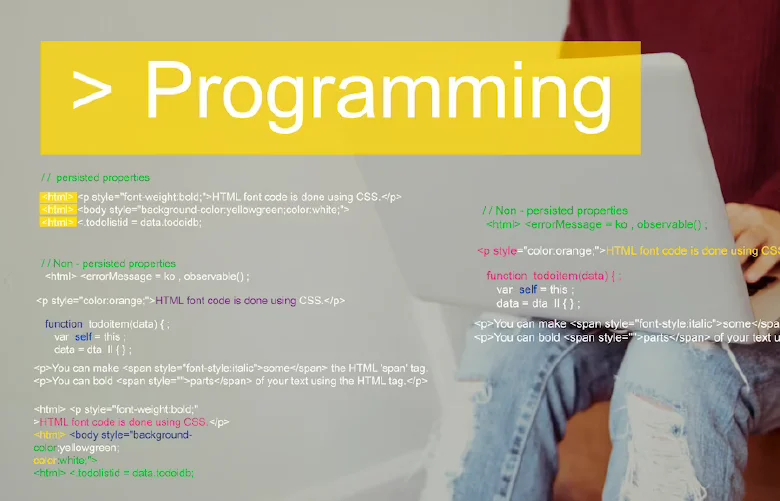Several developers and aspiring programmers are scouring the internet to learn about Tuples in Python. This means they are still unaware of the various Python libraries available.
Although you may have heard about some popular ones like NumPy, there are now various other Python libraries, each with some unique functionalities.
This article highlights in-depth details on the top 10 Python libraries in 2024. So, kickstart your machine-learning journey with this piece of content.
What is a Python Library?
The pre-written modules that makeup Python libraries give your programs extra capability. They are beneficial because they let you use code previously produced and tested by others and reuse it across many projects.

Libraries are provided for various activities, including natural language processing, image processing, statistical processing, and web development.

POSTGRADUATE PROGRAM IN
Multi Cloud Architecture & DevOps
Master cloud architecture, DevOps practices, and automation to build scalable, resilient systems.
Working on Python Library
Python has become one of the most popular programming languages in the past few years and is utilized in various tasks and projects. One of the main factors contributing to Python’s popularity is the abundance of open-source libraries that aren’t just free but also simple to use.
Libraries in Python are groups of valuable modules, functions, classes, and other things. By utilizing pre-existing code rather than creating it from scratch, these libraries assist developers in streamlining their workflow.
Libraries obviously save developers from having to write every line of code from scratch, allowing them to concentrate on the critical components of their projects. It is important to note that there are several top Python libraries available for just about any need you can imagine because Python is utilized in such a broad range of sectors.
Python Libraries for Machine Learning
- NumPy
- Scipy
- Scikit-learn
- Theano
- TensorFlow
- Keras
- PyTorch
- Matplotlib
- Seaborn
- Pandas
1. NumPy
NumPy is a popular Python module that programmers widely used for complex numerical calculations. It is one of the best Python libraries that processes a huge data stack and executes array calculations/computations.
Developers prefer using NumPy for its various functionalities to handle multi-dimensional, high-performance arrays. From division and multiplication to addition and subtraction, developers can perform multiple common operations using NumPy’s wide variety of mathematical functions.
The best part is that it integrates seamlessly with other Python libraries like Matplotlib and Pandas.
2. Scipy
One of the most deserving inclusions in the Python libraries list in this article is SciPy. It is a technological computing and accessible science package with tools for multi-dimensional picture processing, linear algebra, statistics, optimization, integration, interpolation, and more.
This library is built on NumPy and can carry out complex mathematical operations, such as signal processing or calculus. Many developers use it as an alternative to NumPy.
3. Scikit-Learn
Scikit-Learn–associated with SciPy and NumPy–is now one of the most demanding Python libraries in the developers’ community for its ability to work with complex data.
This library underwent a series of changes and modifications. The cross-validation feature is one such change that enables developers to leverage more than a single metric while performing mathematical computations.
It includes a range of data structures and algorithms to implement data mining and standard ML tasks. Explore this article on the overview of data structures and algorithms to better understand what this library entails.
4. Theano
Theano is considered one of the promising Python libraries for its machine-learning capabilities. This mathematical computation library enables developers to ideate and devise deep learning models with its state-of-the-art features. If you’re currently pursuing an AI & ML course, you’ll soon learn how to use this Python library.
Not all Python libraries, but Theano allows seamless integration with NumPy. When developers use this library with a GPU instead of a CPU unit, it becomes 140 times faster for complex data computations.
5. TensorFlow
TensorFlow is another excellent addition to the above-mentioned Python libraries list.
With an amazing community of over 1500 contributors, 35,000 comments and the capability to execute high-performance mathematical computations, TensorFlow has earned the reputation of being one of the best machine-learning libraries across numerous scientific fields.

It is nothing but an ML framework that defines and runs computations involving tensors – partially demonstrated computational objects that generate a value at some point.
6. Keras
Keras is one of the smartest and most efficient Python libraries to date. Developers who hold a keen interest in machine learning often opt for this library. It exhibits neural networks to developers in no time.
Also, Keras is the ideal choice for developers when viewing graphs, processing data sets, or compiling models. Furthermore, it is highly beneficial for backend developers as Keras is compatible with other Python libraries like TensorFlow or Theano.
7. PyTorch
Although relatively new, PyTorch has now become one of the widely used Python libraries for its two top-notch features –
- Using tape-based auto diff system to develop neural networks
- Using strong GPU acceleration for Tensor computation
PyTorch offers a robust and substantial platform to implement deep learning models with enhanced speed and flexibility devised to be seamlessly integrated with Python.
8. Matplotlib
Another great inclusion in the Python libraries list is Matplotlib. This Python package lets developers visualize and plot data to create interactive, animated, and static visualizations.
It offers a range of visualizations like subplots, line plots, histograms, images, bar charts, tables, paths, pie charts, log plots, filled curves, stream plots, and data handling. What makes this library so appealing is its capability to export visualizations and images to multiple file formats.
9. Seaborn
The Python libraries list includes a Python package similar to Matplotlib – Seaborn. This is specifically designed for developers with data visualization and plotting needs. Seaborn is an open-source Python library that was built on Matplotlib.
However, the library comes with some of the extensive data structures and algorithms of Panda – another Python library that we shall discuss in the next section. Seaborn is a fully featured Python package with a top-notch interface that enables developers to make statistical graphs that are both informative and accurate.
10. Pandas
Pandas, also known as Python data analysis, is the last from our Python libraries list. It is a much-needed Python package in the data science life cycle. This library is widely accessed for data cleaning and data analysis. Its flexible and fast data structures, like data frame CDs, make it a widely preferred choice.
Want to learn more about such data structures? Check this article on the various Types of Data Structure in detail.
Use of Libraries in Python Program
To use libraries in Python programs, keep the code’s modularity while creating huge Python apps. Divide the code into various portions for simple maintenance, and you may use that code whenever needed. Modules in Python serve that purpose.
Instead of creating complex code by utilizing the same code in numerous projects, define the most frequently used functions in modules that can be easily imported into any program as needed. By importing its module, you may utilize that capability without creating the necessary code.
A library contains numerous related modules. Additionally, you can import modules from libraries in the Python program anytime you need to use them. Due to Python’s basic syntax, it’s a fairly simple task to do. All you have to do is import.

82.9%
of professionals don't believe their degree can help them get ahead at work.
Conclusion
That’s it! Now you have some basic knowledge of the top 10 Python libraries for machine learning. Also, you should now find no difficulty in using these libraries in Python programs.
If you’re preparing for common data engineering interview questions, brush up your knowledge on these popular Python libraries once. To kickstart a career in machine learning and deep learning, enroll on Hero Vired’s Artificial Intelligence and Machine Learning Course.
Which Python library is used for machine learning?
What are the top Python Libraries?
Which Python library is used for AI?
What are libraries in Python?
Which Python library is mostly used?
Updated on December 19, 2024
